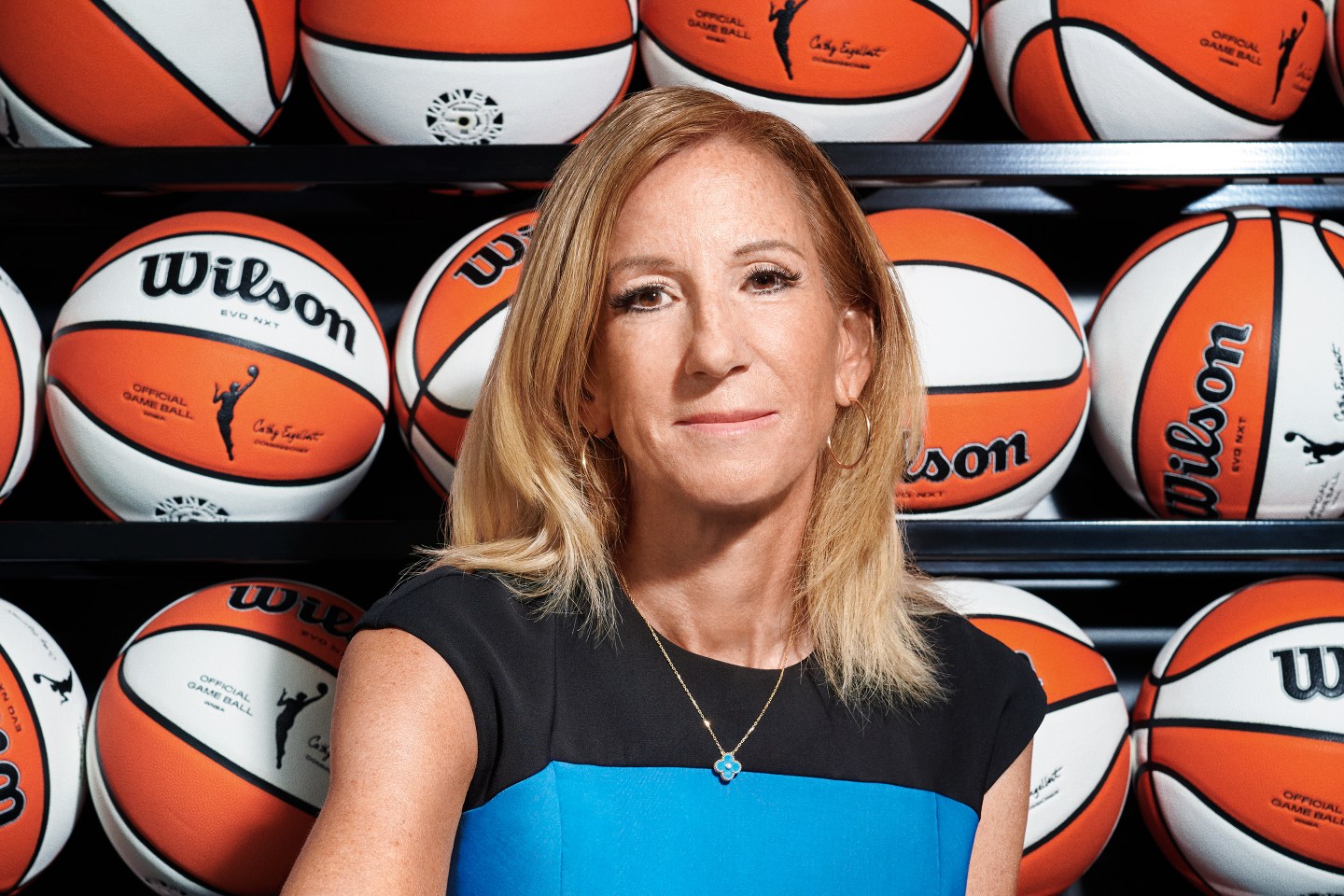Good morning, Broadsheet readers! Karen Lynch’s CVS considers a break up, women boomers are flooding into the stock market, and the job of WNBA commissioner is complicated as the league soars in popularity. Have a terrific Thursday!
– Play ball. Cathy Engelbert arrived at the WNBA in 2019 to a moment she called “existential.” The former U.S. CEO of Deloitte, Engelbert had left a job overseeing $20 billion in revenue and 100,000 employees for a staff of 12 as the WNBA’s first commissioner. When the pandemic hit months after her arrival, five to six teams out of 12 in the league would have folded without a season, she estimated.
This year, the WNBA has risen to highs that would have seemed near-impossible at that low point four years ago: 21 regular season games with more than 1 million viewers, 400,000 tickets sold in one month, and a rush of sponsors—all driven by a surge of interest in women’s sports and a superstar rookie class including players Caitlin Clark and Angel Reese.
It’s an exciting and high-stakes moment for the 28-year-old league. And it’s one that has led to debate throughout the sports world about how best to meet this heightened interest, as I spent the past few months exploring through conversations with players, owners, league execs, and other stakeholders in a new feature for the October/November issue of Fortune.
Mackenzie Stroh for Fortune
As commissioner, Engelbert is tasked with a balancing act between serving players, owners, fans, and the NBA, which owns 42% of the WNBA. That act has only become more delicate with the demands of this season’s attention—and accompanying frustrations. As agent Allison Galer puts it: “Every metric is up—except player compensation.” Salaries are collectively bargained, so they won’t change until 2026 at the earliest and still average $135,000. With millions of new viewers, too, have come increased online trolling, hate, and racism—and debates over how the league and Engelbert have dealt with that reality.
Despite the meteoric rise in media attention, the WNBA is still a relatively small business. Its teams and leagues took in $200 million in revenue in 2023, and while ticket sales and sponsorships are up this year, the real money—from a new $200 million-a-year media deal—won’t start coming in until 2026. The league and its teams are projected to lose $40 million…
Click Here to Read the Full Original Article at Fortune | FORTUNE…


